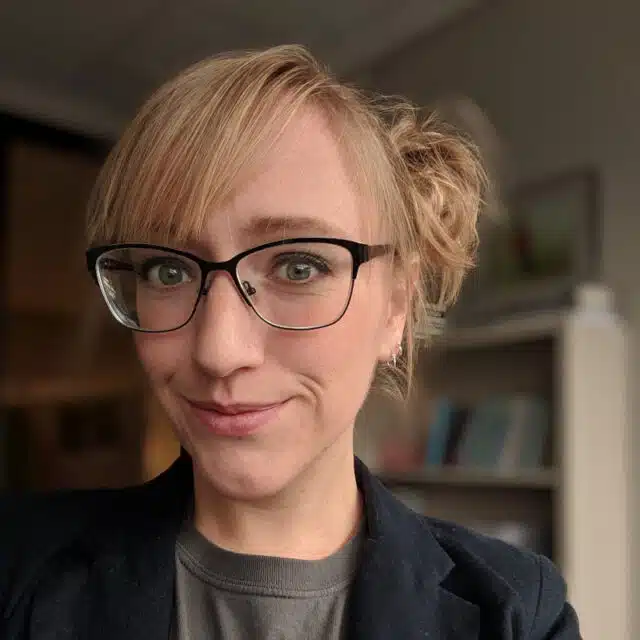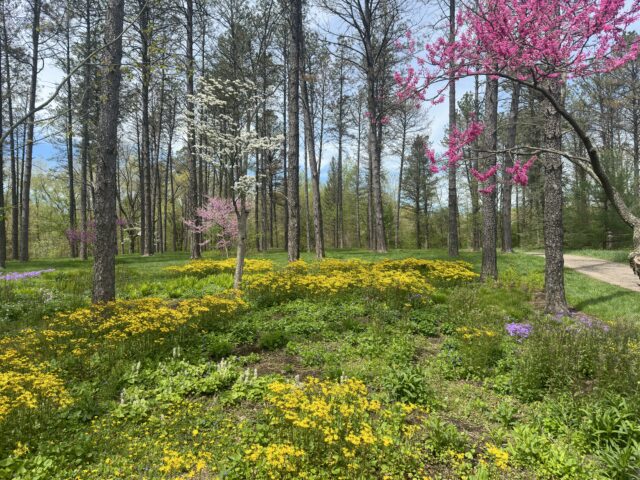Every flower hosts a diverse community of pollen grains (from the wrong species)
November 21, 2023

Bees, butterflies, and other pollinators flit from flower to flower, drinking nectar while hitchhiking pollen sticks on for a ride. The tiny pollen grains carry plants’ reproductive cells, which means these pollinator snack times are mission-critical for plant reproduction. But with so many different types of flowers out there, how does the right species of pollen ever make it onto the right flower?
As it turns out, the head of a flower’s stigma — the landing pad for pollen on the receiving flower — can be covered in a whole community of pollen that’s been deposited by pollinators, much of which can be from different species. In a new study published in the journal Functional Ecology, researchers shed light on how these pollen communities form and how much they vary between flowers. Their findings will help us understand an often overlooked link between pollinators and flowering plants.
“Researchers typically study visitation when considering plant-pollinator interactions, that is, which pollinators are visiting which flowers,” explains Na Wei, scientist at Holden Forests & Gardens in Kirtland, Ohio, who collaborated with Tia-Lynn Ashman, professor at the University of Pittsburgh on the new study. “But the pollen itself is the outcome — visitors might not deposit the right pollen,”
The researchers studied 59 plant species that bloom together across three study sites in California. By observing the flowers in their natural environment and analyzing them in the lab, the team measured how their pollen communities varied depending on factors like the size of the stigma, the number of flowers from the same species in the area, and the number of different pollinators that visit the flower.
These pollen communities matter because pollen grains from the wrong species actually compete, in a way, with the “correct” grains, explains Wei. They physically occupy the stigma, and so can get in the way of the plant’s reproduction.
The study was no small feat. Identifying pollen grains to species is, Wei says, “extremely difficult — a lot of people cannot do that.” The pollen work required first establishing a pollen library to use for identification, collecting pollen from every species in the area from not-yet-open flowers to establish reference materials. They took images of the grains from all different angles, and used machine learning to help automate identification.
“We counted over a million pollen grains on the stigmas,” says Wei. “It took many students about two years looking through microscopes — their eyes didn’t work afterward,” she jests.
The study revealed that the diversity of pollen found on different plant species, also known as its gamma diversity, was strongly linked to differences in pollen communities on a stigma-by-stigma basis on individual plants. This was in turn affected by the traits of the stigmas of different species — for instance larger and more exposed stigmas held a higher diversity of pollen, largely due to the increased total number of pollen grains. Surprisingly, traits related to the pollinators had less of an impact on these measures of diversity than did the flower traits.
Wei says the next step is to see how these diverse pollen communities impact fitness of the different plants. These pollen dynamics reveal a new complexity in how plants, pollinators, and their environment are closely interconnected.
Citation: Ashman, Tia-Lynn and Wei, Na. 2023. Evaluating the influences of floral traits and pollinator generalism on α and β diversity of heterospecific pollen on stigmas. Functional Ecology.
Header image: Rainee Kaczorowski
About Holden Forests & Gardens: Holden Forests & Gardens is made up of two of Northeast Ohio’s most important environmental and cultural institutions — the Holden Arboretum and Cleveland Botanical Garden — whose mission is to connect people with the wonder, beauty, and value of trees and plants, to inspire action for healthy communities. One of the largest public gardens in the country, Holden Forests & Gardens has 18,000 member households and an annual attendance of nearly 350,000 for whom we strive to provide inspirational and educational visitor experiences. For more information, visit holdenfg.org.
Corresponding Author:
Na Wei, Scientist
Holden Forests & Gardens
nwei@holdenfg.org
Media Contact:
Anna Funk, Science Communications Specialist
Holden Forests & Gardens
afunk@holdenfg.org

Anna Funk, PhD
Science Communications Specialist
Anna Funk is the Science Communication Specialist for Holden Forests & Gardens. She earned her Ph.D. studying prairie restoration before leaving the research world to help tell scientists’ stories. Today, she wears many hats, working as a writer, editor, journalist and more — anything that lets her share her appreciation of science and its impact with others.











